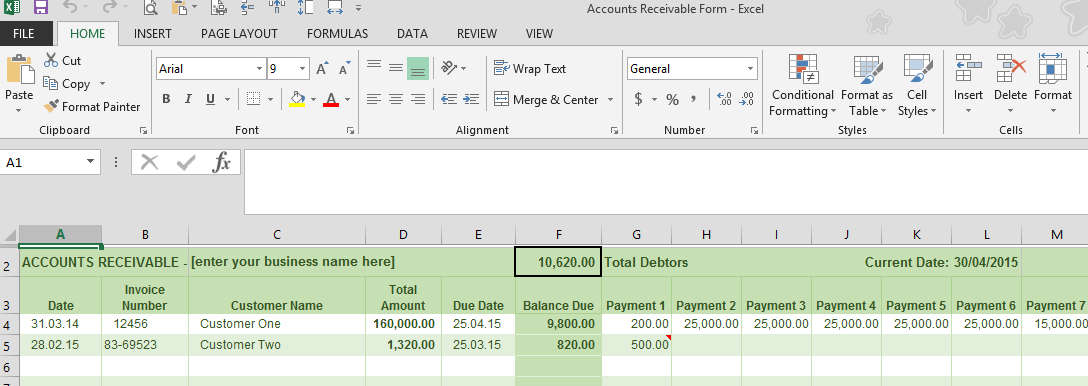
The expenses included in your COGS are usually tax-deductible, so the more accurate your records are, the better you can manage your taxes. If you don’t know how much money you are spending to create or acquire products, it will be difficult (if not impossible) to correctly determine if you are turning a profit. Tracking and calculating COGS meticulously enables you to get a more accurate sense of your business’s profitability, which is a key factor in the overall financial health of your business. Now, you might be wondering what makes the cost of goods sold different from your expenses. For your expenses, your money can be going towards any number of things such as rent and health insurance.
If a company can reduce its COGS through better deals with suppliers or through more efficiency in the production process, it can be more profitable. For example, airlines and hotels are primarily providers of services such as transport and lodging, respectively, yet they also sell gifts, food, beverages, and other items. These items are definitely considered goods, and these companies certainly have inventories of such goods. Both of these industries can list COGS on their income statements and claim them for tax purposes. Interestingly, employee payroll can be classified as either type of expense, depending on the specific type of labor involved.
Understanding Cost of Goods Sold (COGS)
Both COGS and OpEx appear on the income statement, but the cash impact of CapEx does not. Business that use COGS are able to achieve better visibility into their profit margins, allowing them to identify opportunities to increase profitability. Reorder quantity refers to the number of units requested in an inventory accounting balance sheet replenishment purchase order. Identifying the optimal reorder quantity is crucial, as a business should maintain just enough inventory to prevent stockouts without accidentally overstocking. Since this method isn’t affected by purchase or production date, the COGS is less likely to be impacted by cost fluctuations.
ShipBob’s inventory management software provides ecommerce merchants with visibility into key data and powerful analytics through the ShipBob dashboard. The software automatically tracks key metrics across order fulfillment and shipping, so that merchants can access more accurate information with less effort. This means that the COGS of the oldest inventory is used for calculating the value of the ending inventory, even if there have been recent changes in the cost of inventory.
Is the cost of goods sold an expense or not?
However, a consulting lawyer’s labor hours would not be permitted as a COGS expense, because the lawyer’s work does not produce a physical, sellable product. In addition, cost of sales is not tax-deductible, unlike cost of goods sold. While “cost of goods sold” and “cost of sales” sound similar, they are different things. Cost of goods sold, or “COGS” for short, refers to the amount of money your business spent to produce or procure the products that you sold.

While this COGS primer is for a basic understanding, COGS implementation will vary from business to business. At Lucrum, we have experience across industries and can any any questions you have about this or any other aspect of accounting. Don’t hesitate to contact us if you need help implementing and optimizing your COGS.
Average Cost Method
However, you have to be careful to ensure you’re not sacrificing quality and your business’s integrity. Businesses can reduce operating expenses by automating tasks, cancelling unused services and subscriptions, and shopping around before making a purchase. Take a look at your operating budget to see where you can cut costs.
Can you have cost of goods sold without inventory?
COGS is not addressed in any detail in generally accepted accounting principles (GAAP), but COGS is defined as only the cost of inventory items sold during a given period. Not only do service companies have no goods to sell, but purely service companies also do not have inventories.
Since prices tend to go up over time, a company that uses the FIFO method will sell its least expensive products first, which translates to a lower COGS than the COGS recorded under LIFO. The balance sheet has an account called the current assets account. The balance sheet only captures a company’s financial health at the end of an accounting period. This means that the inventory value recorded under current assets is the ending inventory.
Cost of Goods Sold Template
In the income statement, gross profit is equal to total sales minus COGS. Any additional income (this can include dividend income, selling equipment, or capital gains) is then added, giving the total revenue. This total is subtracted from the total revenue, which gives net profit.
Is cost of goods sold an expense or asset?
The cost of goods sold is considered to be linked to sales under the matching principle. Thus, once you recognize revenues when a sale occurs, you must recognize the cost of goods sold at the same time, as the primary offsetting expense. This means that the cost of goods sold is an expense.
Very briefly, there are four main valuation methods for inventory and cost of goods sold. To align the cash outflow with the revenue, CapEx is expensed on the income statement through depreciation – a non-cash expense embedded within either COGS or OpEx. In addition, the two are linked – i.e. operating income (EBIT) is the gross profit minus OpEx. Under the FIFO accounting method, you would assume that the first tapestries your sold were the first ones you made — the ones that cost $50 apiece to make.
Does cost of goods sold go on the income statement?
The cost of goods sold (COGS) is the sum of all direct costs associated with making a product. It appears on an income statement and typically includes money mainly spent on raw materials and labour.
